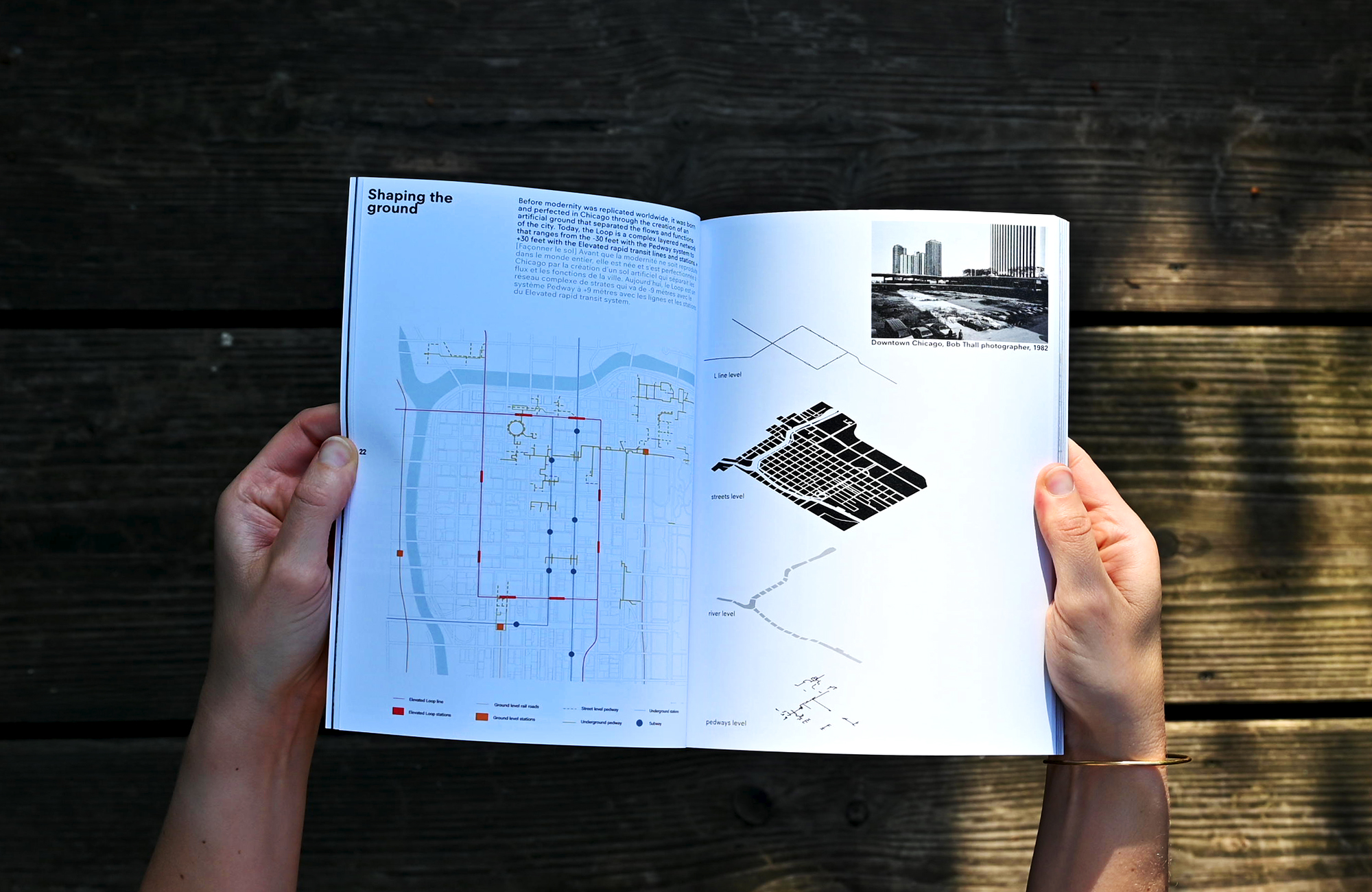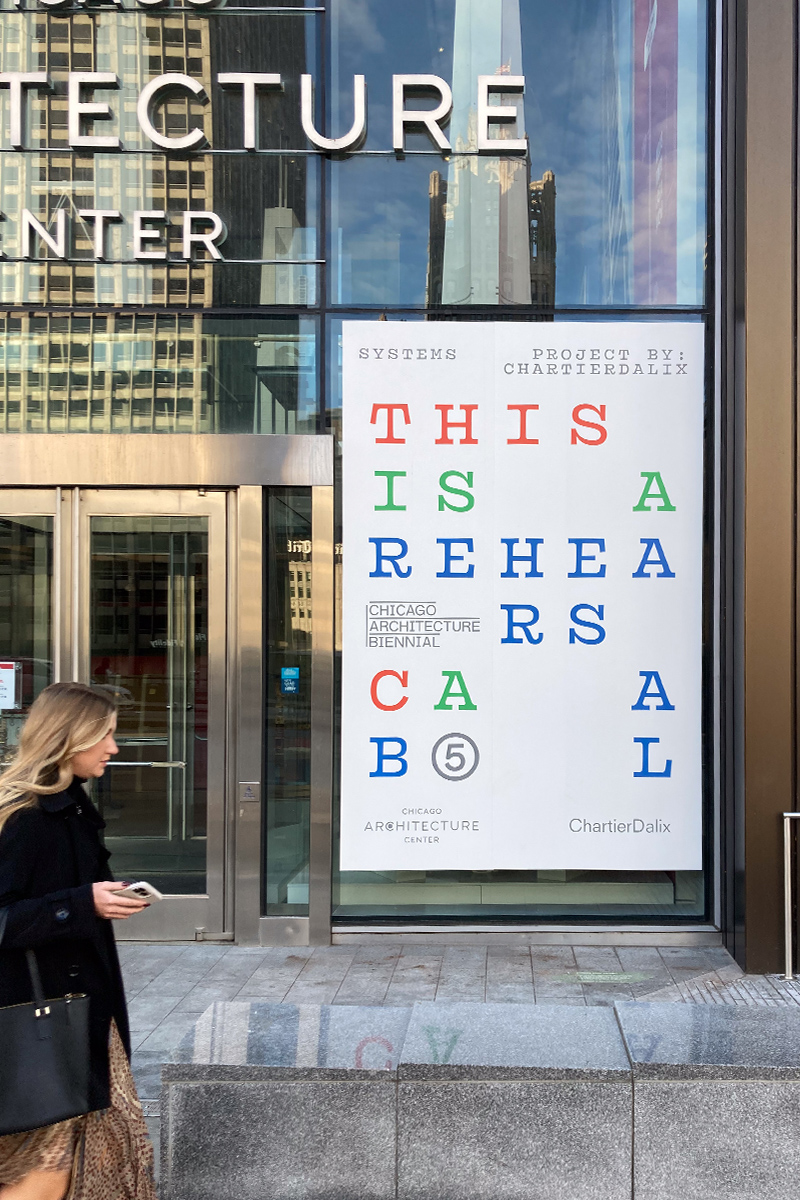
Generally conceived as isolated totems lacking a local anchorage and accessibility, the towers built in the second half of the 20th century illustrate a model that is obsolete in many respects.
Today, the building sector is responsible for more than 30% of greenhouse gas emissions - from the impact of construction to the energy needs necessary to operate the buildings. It seems essential for us to deal with this vertical legacy, especially because its carbon footprint is already largely amortized. Moreover, we know that even heavily restructuring a building only emits half as much CO2 as a new reconstruction.
Repairing and stimulating - rather than destroying and rebuilding - is a concrete way to save energy and reduce costs, it offers a reserve of reusable materials, and a great opportunity to discover new uses linked to the reconversion. These modern towers have many structural and technical advantages that allow this reconversion and in fact offer new opportunities to think of mixed towers that produce their own energy and celebrate the vertical experience.
The ongoing energy transition requires inventing new models of resilience. Going beyond the typical demolition-reconstruction or rehabilitation methods, we decided to think about coordinated operations.
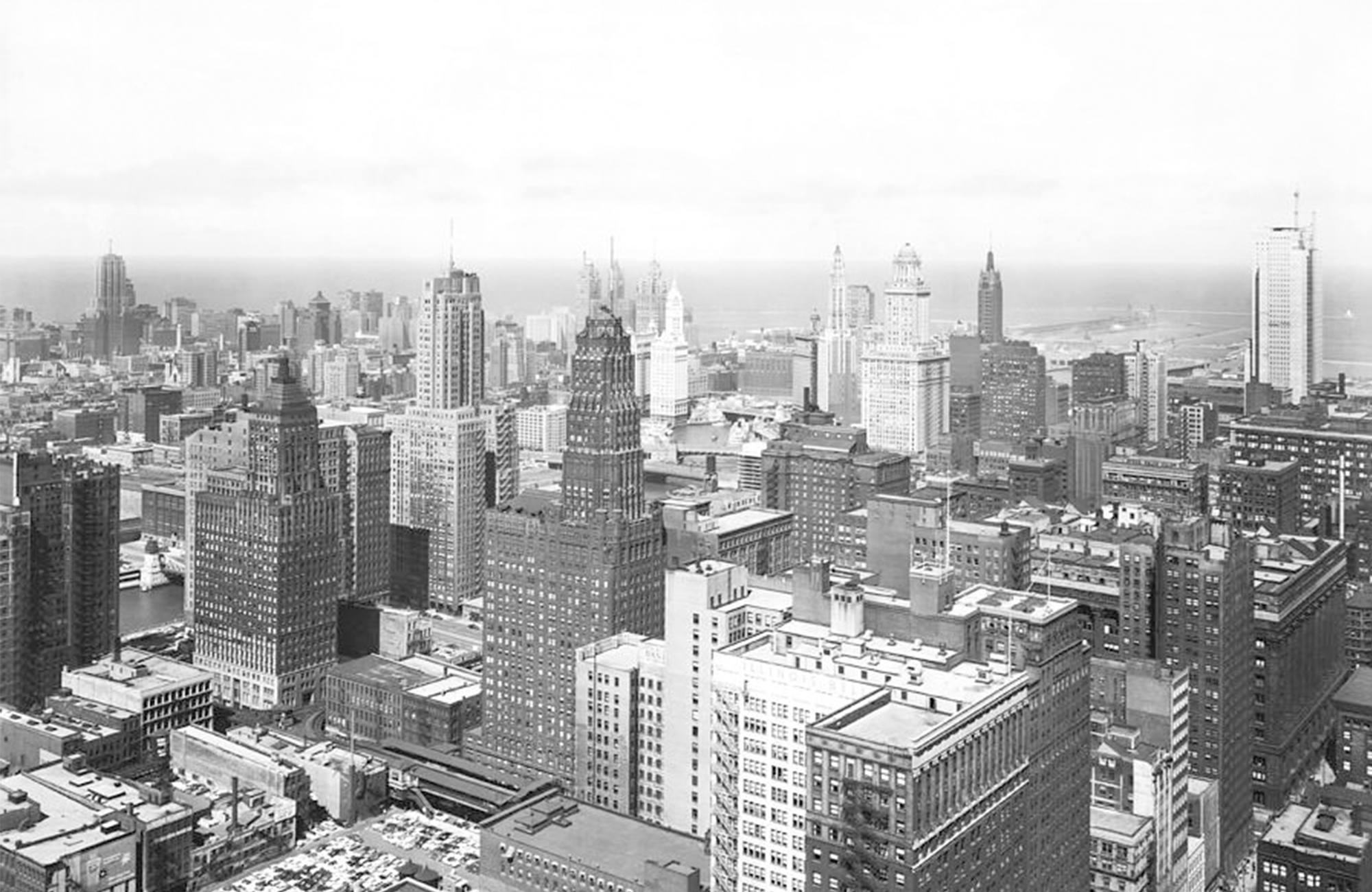

The city of Chicago, and particularly its downtown Loop, is known for its dynamic and distinctive urban landscape. Its dense neighborhoods were built on loamy, unstable soils, and its streets are considered the cradle of Modernity in architecture - the emulation that took place there in the 20th century gave rise to its own architectural movement called the Chicago School. The layout of the city's downtown area was created by the impracticality of the geographical conditions that made it difficult to build large structures on the shores of Lake Michigan.
This "groundless" city, identifiable by its omnipresent grid, is characterized by highly fragmented and constrained parcels of land. The underground development of numerous tunnels and the separation of service flows and users implies that the surface of the city center is gridded with "support" infrastructures. The rationalization and sizing of the foundations to accommodate a high density has led to the construction of a long line of iconic high-rise buildings.
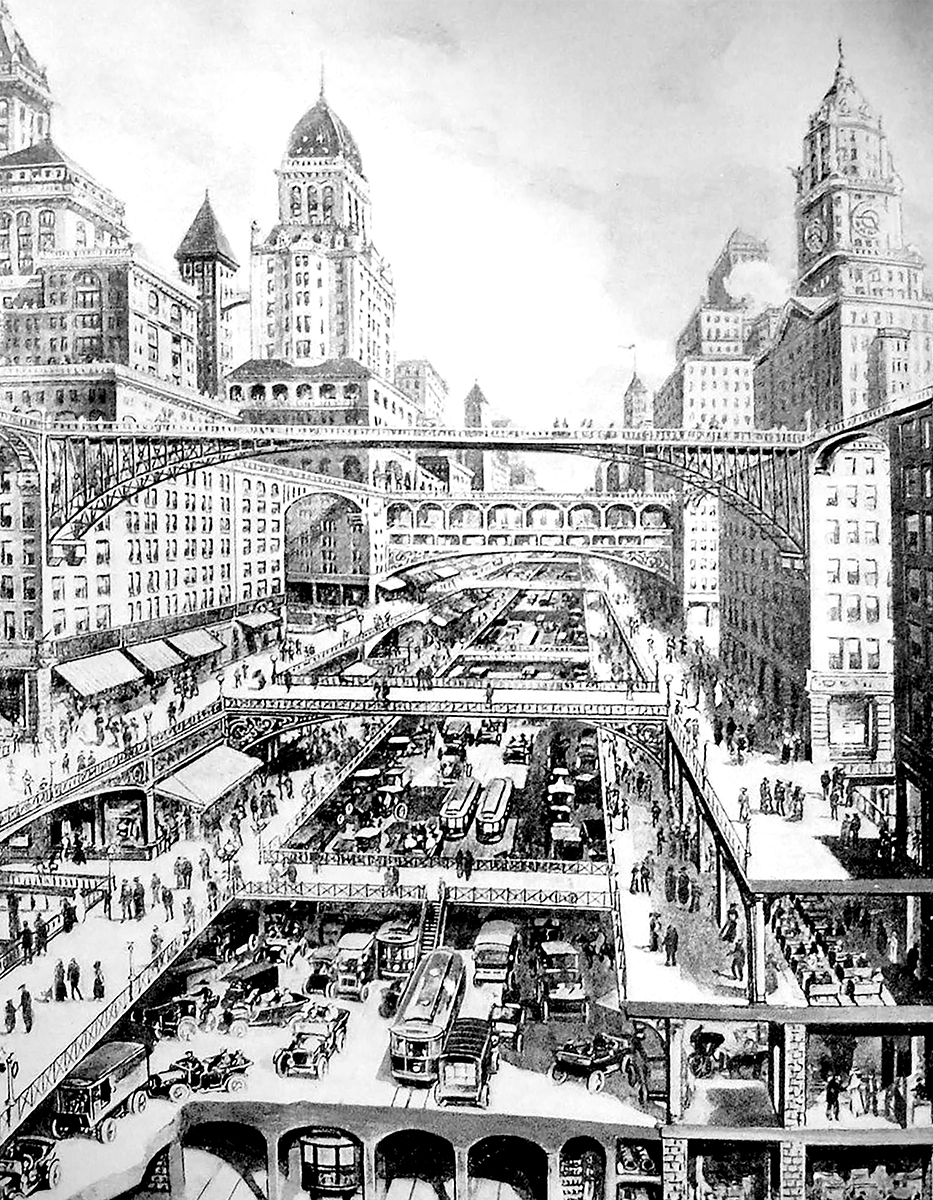
The worldwide diffusion of the principles of the Modern movement in International Style has given rise to a rich legacy that we believe is worth questioning as it transitions to a more sober and mixed world. The objective is to question its specificities, its capacity for mutation and the reversibility of its fundamental architectural principles.
In Chicago, the constructive rationality with which the towers are conceived - structure vs. facade - suggests a great flexibility in their use and the superposition of diverse activities. As the architectural historian Jean Castex says, the skyscrapers of the twenties hide under conventional appearances "extreme forms" due to the hybridization of the programs. By connecting to mulitple different levels of the ground, the towers erode the boundaries between street and buildings.
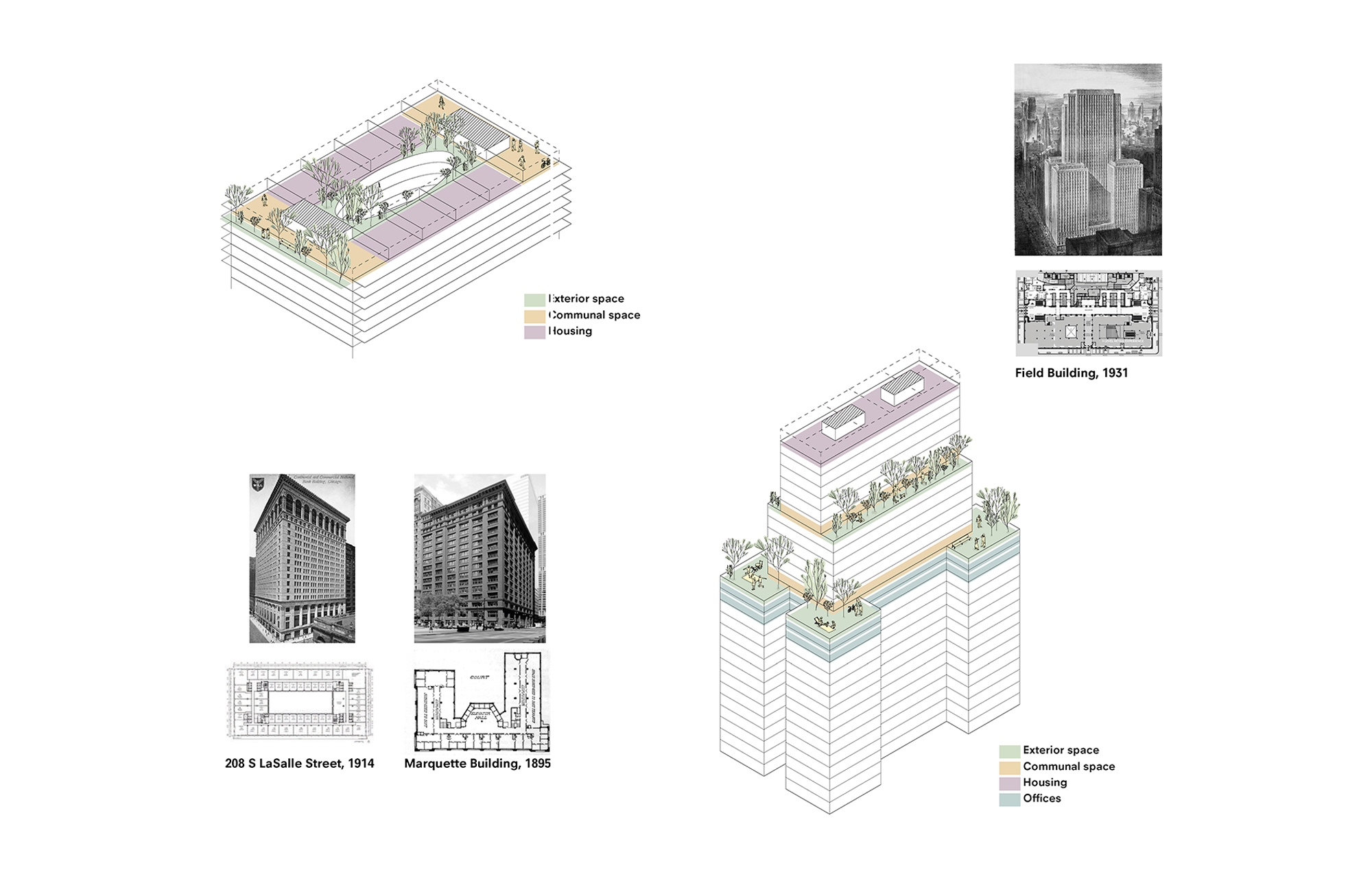
ChartierDalix sets up in Chicago in the heart of the Loop district, a dense urban site where the history of this archetype is deeply rooted and whose programmatic vocation is originally more mixed. From the tower as an isolated object to the high-rise business district, we seek to pursue our reflection on the rehabilitation of these iconic objects of the 20th century and their passage into a more sober and mixed-use world.
The purpose of our study is to take note of the problems raised by the inheritance of such a heritage at a global level and to outline tools and perspectives for its evolution in the continuity of our theoretical and practical experiences.
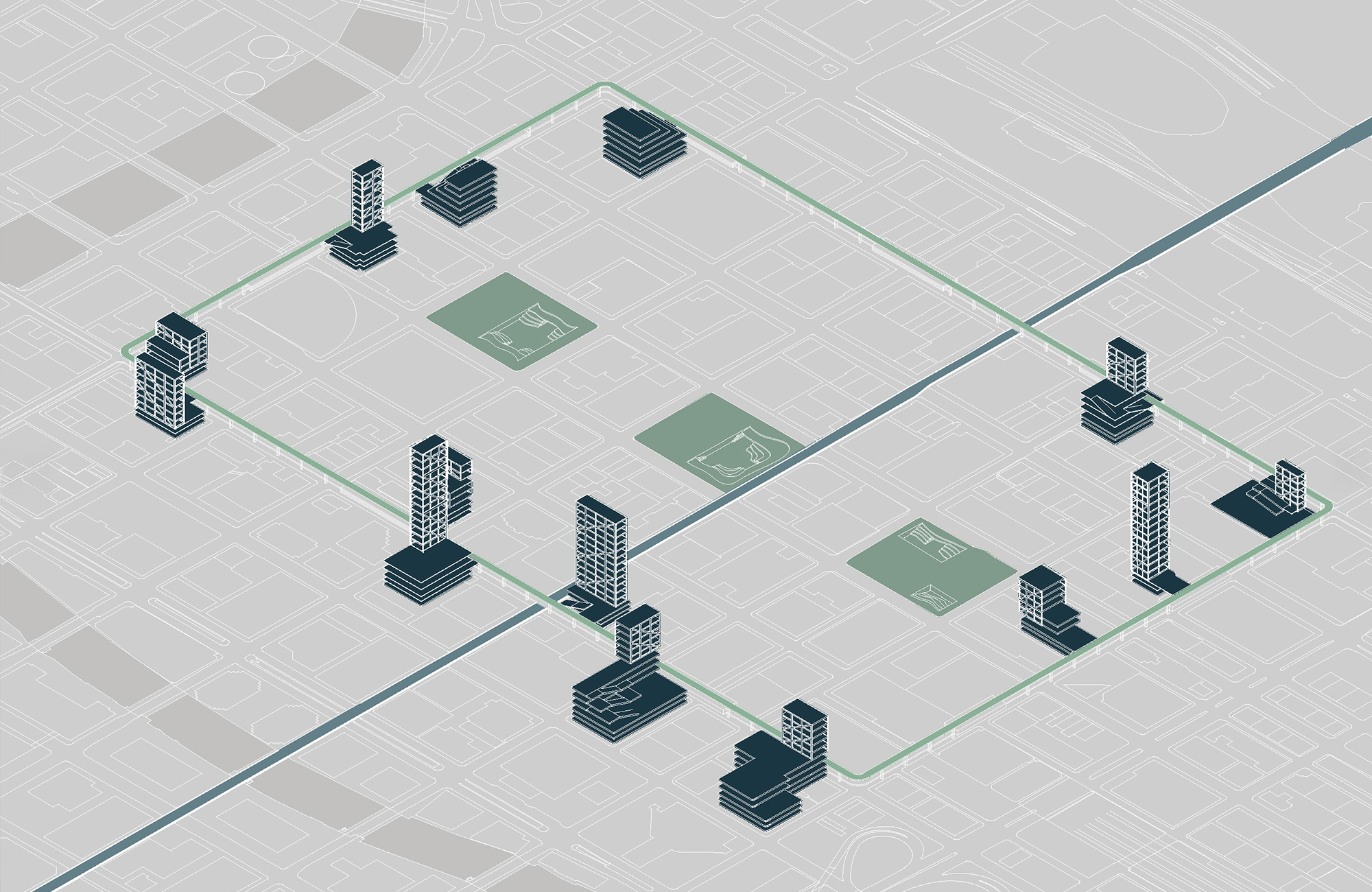

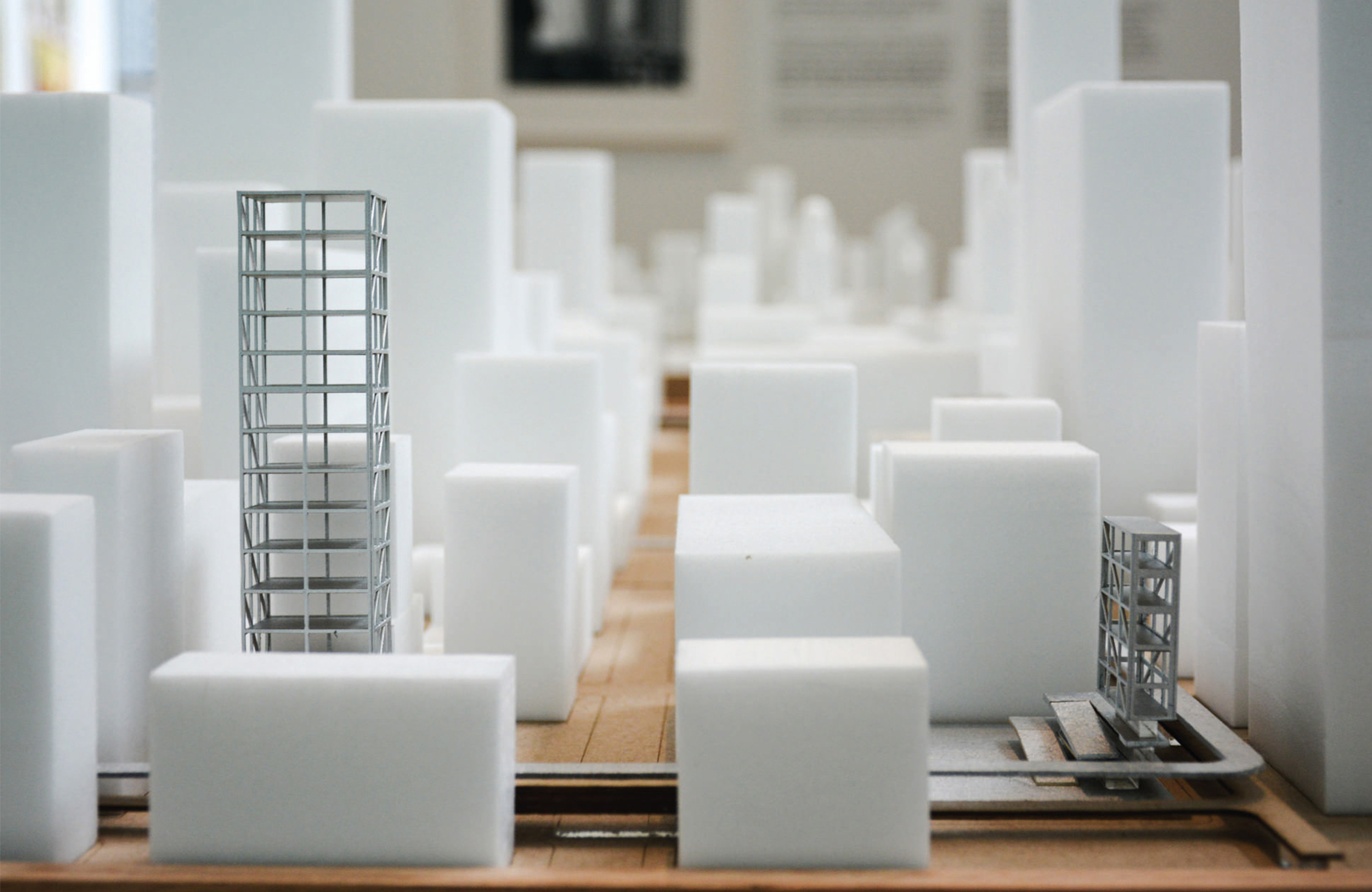
In 2024, ChartierDalix was awarded the Villa Albertine post-residency grant. We will collect and disseminate the research carried out during our residency and our contribution to CAB5 through a publication: The Loop. Rehabilitation is Reinvention1. The book is divided into three chapters: an analysis of the Loop from its inception to the present day, identifying problems, potentials and characteristic building typologies; a proposal for action to transform the district; a photographic corpus from the Systems exhibition; and a comparison of the French and American high-rise districts of La Défense and the Loop.
1 The Loop. Rehabilitation is Reinvention, Chartier-Dalix, 2024, 124 p.
Villa Albertine's post-residency was also the occasion for a second trip to Chicago, from 24 April to 1 May 2024, during which we accompanied a French delegation of business leaders and developers. We were able to present our Systems exhibition to the participants of this trip. The closing of this exhibition was followed by the opening of Loop as LAB: reshaping downtowns - 25 April 2024 to 5 January 2025 - where our project to redevelop the Tour Montparnasse in Paris was exhibited as an international example of high-rise transformation.

